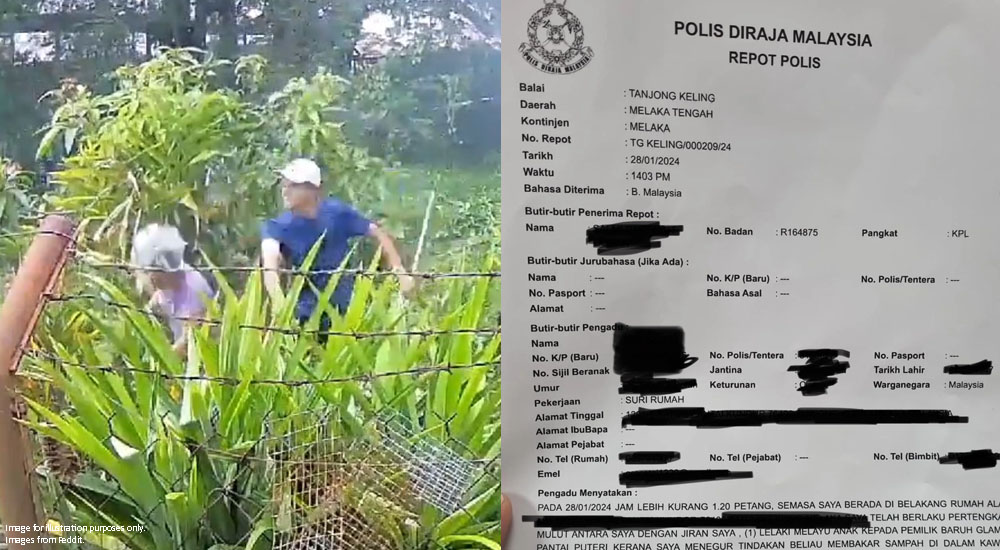[PHOTOS] Overdeveloped or not? See how Melaka has changed

- 289Shares
- Facebook286
- LinkedIn1
- WhatsApp1
Before ‘feng tao‘ LED trishaws and Avengers merchandise populated the streets, Melaka was once a little town bursting with culture, charm and chicken rice balls. Not that the Melaka today doesn’t offer these – it’s just fast facing over-development, losing its heritage and cultural identity slowly but surely. At least, that’s what the organisers behind the New/Old Malacca project feel.

The city, an official UNESCO World Heritage Site, has been drawing tourists from all over and locals cannot be more conscious about it being commercialised beyond what it is. The good guys at the Baba & Nyonya Heritage Museum, the Malaysian Heritage & History Club and the Daily Fix Cafe are but a few of them.
And so, they came up with the New/Old Malacca project, a community campaign aimed to get the public involved to create a connection and awareness between olden day Melaka and what it is today.
On a different perspective, we at CILISOS think that development is necessary to a certain degree ’cause without it, how would, say, museums flourish? The key here is to strike the right balance and getting everyone to be equally passionate and responsible over the history they’ve been blessed with. Ain’t easy, though.
What do you think?
Here’s how much Melaka has changed
Melissa Chan, curator at the Baba Nyonya Heritage Museum, takes us on a visual walk down memory lane with these amazing photos by the Malaysian Heritage & History Club. Check out what the city’s townscape looked like in different time periods:
#1: Chan Khoon Cheng Bridge, the circa 1900

“A second bridge was built to service the growing town in 1908. A busy marketplace was just across the river, where the townsfolk would do their daily shopping and groceries. Before the invention of refrigerators and the coming of electricity, each house had fresh produce every day! The building of this bridge also ensured that the nearby Kampong Pantai became a main thoroughfare for traders.”
#2: Stadhuys & Tan Kim Seng Bridge, 17th-19th Century Malacca

“The Dutch first captured Malacca in 1641. The Stadhuys became the center for their administration between 1645-1824, and also was also at one time the Dutch Governor’s residence. Christ Church was built to commemorate the 100 years of the Dutch conquest of Malacca, and work began in 1741.
The Chinese began coming to the Straits Settlements in the 15th Century.
The town’s main bridge, built in 1862, was named after Straits-born Chinese Baba Tan Kim Seng (1805-1864). Baba Tan Kim Seng was responsible for contributing to much of Singapore’s early development. The present day building of Hotel Puri that many know, was once the homestead of Baba Tan Kim Seng.”
#3: Jalan Laksamana, 1930s-1970s

“Stationery, bookstores, printing press, dispensaries, pharmacies, a marketplace and everyday goods were the main businesses along the riverside.
Lim Brothers Bookstore was established by Lim Jit Chiang in 1935. It was THE bookstore of the town. Chan Kim Cheng, resident of No. 48 & 50 Heeren Street (now Jalan Tun Cheng Lock) remembers going to the bookstore in his early teens in the 1940s, to get his hands on the latest Beano and Desparate Dan comics.
The bookstore moved from its original location of No. 7 Riverside to the other side of the road. It serviced generations of families before closing down in 2001. Lim Jit Chiang’s grandson Danny Lim, a photographer/writer, paid tribute to this bookstore with a beautiful online homage. Check it out here.”
#4: Gentlemen’s Street, circa 1840s

“During the Portuguese era (1511-1641), it was known as Kampung Cheli (Keling) where many of wealthiest merchants, known as the Keling (Quelin, or Chelin in Portuguese) lived. The Hindu community had much influence in Portuguese Malacca.
Later renamed Heeren Straat (Gentleman’s Street), many Straits Born Chinese began to occupy the street during the British occupation. One of Malaysia’s founding statesmen Tun Tan Cheng Lock lived on this street, and some of the houses on the street are still ancestral homes to other notable babas. Amidst the burgeoning commercial shops, you’ll still be able to see Tun Tan Cheng Lock’s house, and Tan Kim Seng’s ancestral home (unfortunately they are not open for public viewing).”
You can make these awesome photos yourself…
The New/Old Malacca project uses the Timera app which you can download for free on Google Play or iTunes. This app basically lets you superimpose old (or any other photos) with new ones to create a 2-in-1 photo.
We were a bit kepoh so we tried it on our pre-renovated CILISOS office. So easy!

But if you wanna take some shots to contribute to the New/Old Malacca project, look for #newoldmalacca on the app and check out the full set of photos (photos only available on 16 Sept 2014).
… and jalan-jalan cari sejarah, too!
For real, y’all. Don’t miss the launch on Malaysia Day, 16 September 2014. You’ll literally go for a walkabout with veteran history buffs Colin Goh, Serge Jardin and Jo Chua, where you’ll cover the Stadhuys, Tan Kim Seng Bridge, St. Paul’s Hill, Porto Santiago and Taman Merdeka.
Be at the meeting point (Malacca Tourist Information Center opposite the Stadhuys) at 9am. Bring a hat and make sure your phones are charged ’cause you’ll be walking around town snapping photos and errthang. The walkabout ends at The Daily Fix Cafe where you guys can share your photos with everyone else.
It sounds so awesome, especially for history buffs. If we weren’t based in Petaling Jaya we’d def be there! 🙁
And if you can’t make it for the launch like us, fret not – download the app, take your own new/old photos whenever and share your story. The best photos will be showcased in an exhibition in December 2014.
Have fun!
- 289Shares
- Facebook286
- LinkedIn1
- WhatsApp1



